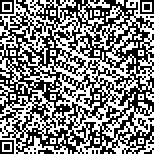| 摘要: |
| 北极多年冰在近几十年有明显的减少趋势, 与北极海冰的厚度、体积和夏季最小海冰范围的减少密切相关。合成孔径雷达(synthetic aperture radar, SAR)具有全天时、全天候成像能力, 基于SAR卫星影像的海冰分类对监测北极多年冰具有重要意义。基于深度学习U-Net模型, 以SAR图像的双极化信息为模型输入, 构建了像素级的海水、一年冰和多年冰多分类模型。与已有SAR图像海冰分类方法(支持向量机、随机森林和卷积神经网络)进行对比, 基于双极化SAR图像的U-Net海冰分类模型的准确率、平均重叠度和Kappa系数, 分别达到了90.73%、0.831和0.849, 优于其他对比模型, 分别提升了4.08%~19.04%, 0.063~0.321和0.111~0.335。此外, 针对SAR图像水平-垂直极化(horizontal-vertical polarization, HV)有明显的条状热噪声和水平-水平极化(horizontal-horizontal polarization, HH)受入射角效应而亮度不均匀的特点, 设计敏感性实验, 研究HV噪声、入射角和灰度共生矩阵(gray level co-occurrence matrix, GLCM)纹理信息对本文U-Net海冰分类模型的影响。结果表明, 传统的机器学习方法对噪声更敏感, 而深度学习模型有一定的抗噪声能力; 使用入射角校正更适合分类一年冰和多年冰; 单一GLCM纹理对U-Net模型的海冰分类效果无明显提高。综上, 基于双极化SAR图像的U-Net能够实现高精度的海水、一年冰和多年冰分类。该模型具有一定的抗噪声能力, 是更具鲁棒性的海冰分类方法。 |
| 关键词: 合成孔径雷达(SAR)图像 海冰分类 深度学习 U-Net模型 |
| DOI:10.11693/hyhz20230300063 |
| 分类号: |
| 基金项目:崂山实验室科技创新项目,LSKJ202202302号;国家自然科学基金青年项目,42206202号;国家自然科学基金-山东省联合基金,U2006211号 |
附件 |
|
| A U-NET SEA ICE CLASSIFICATION MODEL BASED ON DUAL-POLARIZED SAR IMAGES |
|
HUANG Yan1,2, REN Yi-Bin1
|
|
1.CAS Key Laboratory of Ocean Circulation and Waves, Institute of Oceanology, Qingdao 266071, China;2.University of Chinese Academy of Sciences, Beijing 100049, China
|
| Abstract: |
| The Arctic multi-year ice has shown a significant decreasing trend in recent decades, which is closely related to the decreases in thickness, volume, and minimum summer extent of the Arctic sea ice. Synthetic aperture radar (SAR) has imaging capability in nighttime and cloudy conditions, and sea ice classification based on SAR images shows high significance for monitoring Arctic multi-year ice. A sea ice classification model was constructed based on deep learning U-Net model for open water, first-year ice, and multi-year ice at pixel level with dual-polarization SAR images. In comparison with existing SAR image sea ice classification methods (support vector machines, random forests, and convolutional neural networks), the accuracy, mean intersection over union, and Kappa coefficient of the U-Net sea ice classification model based on dual-polarized SAR images achieved 90.73%, 0.831, and 0.849, respectively, better than the other comparison models', being improved by 4.08%~19.04%, 0.063~0.321, and 0.111~0.335, respectively. In addition, the horizontal-vertical polarization (HV) images of Sentinel-1 SAR images have obvious thermal noise, and the horizontal-horizontal polarization (HH) images have non-uniform brightness due to the incidence angle effect. Sensitivity experiments were designed to investigate the effects of HV noise, incidence angle, and grey-level co-occurrence matrix (GLCM) textures on the U-Net model. Results show that traditional machine learning methods are more sensitive to noise, while deep learning models have some resistance; using incidence angle correction is more suitable for classifying first-year ice and multi-year ice; and a single GLCM texture shows less obvious improvement of the U-Net model. Therefore, the U-Net based on dual-polarized SAR images could achieve high accuracy for open water, first-year ice, and multi-year ice classification, which is noise tolerable and a more robust sea ice classification method. |
| Key words: synthetic aperture radar (SAR) images sea ice classification deep learning U-Net |
